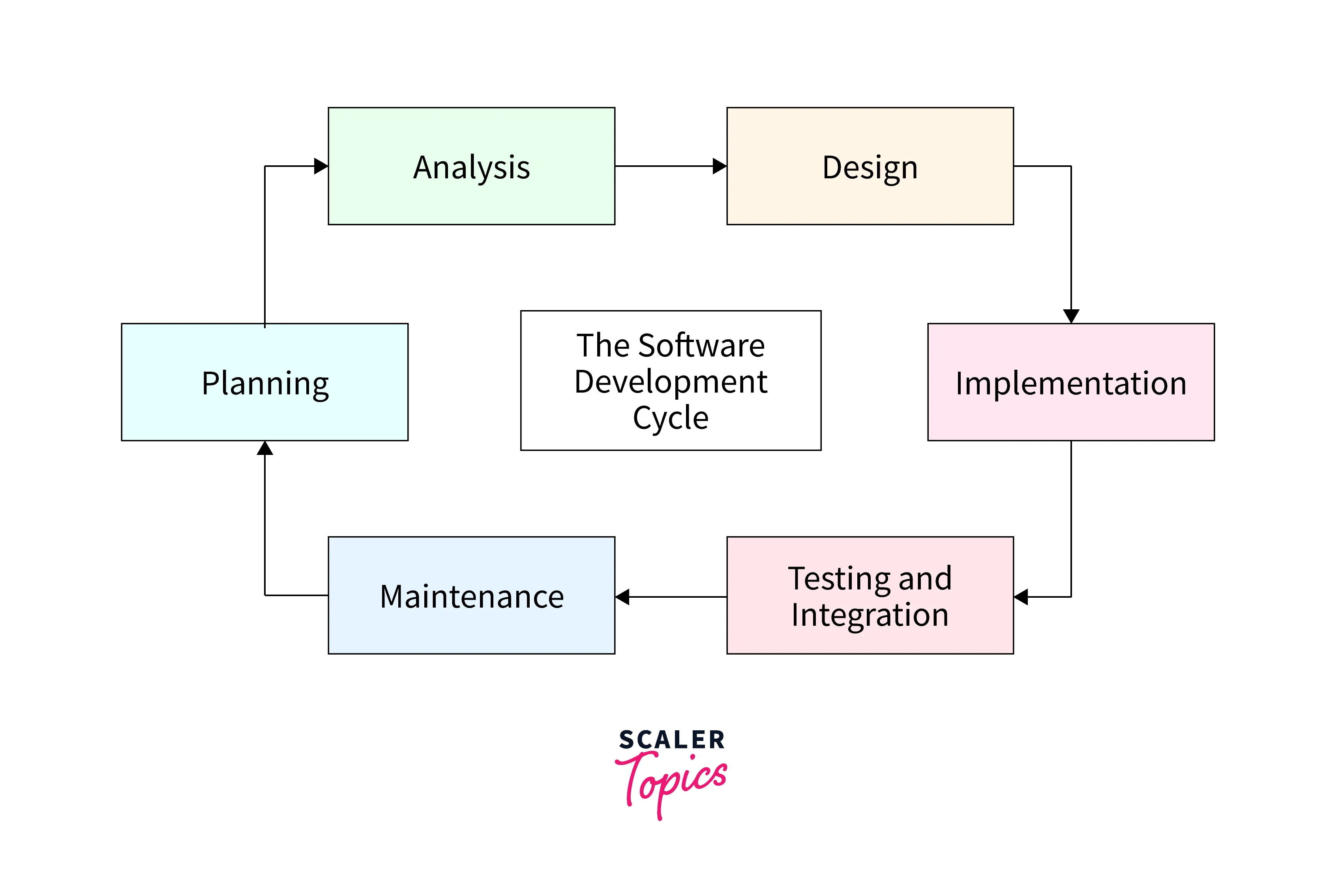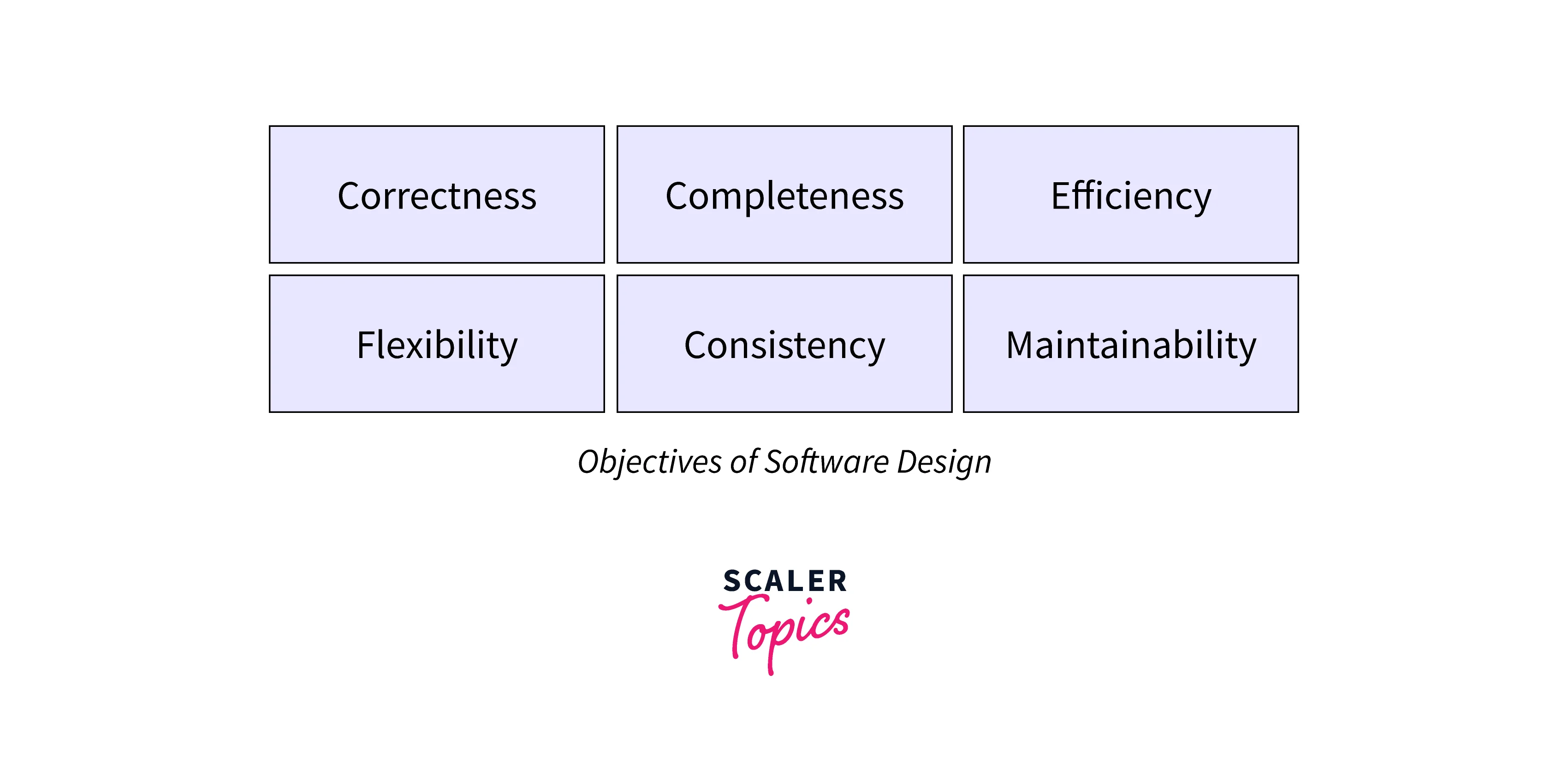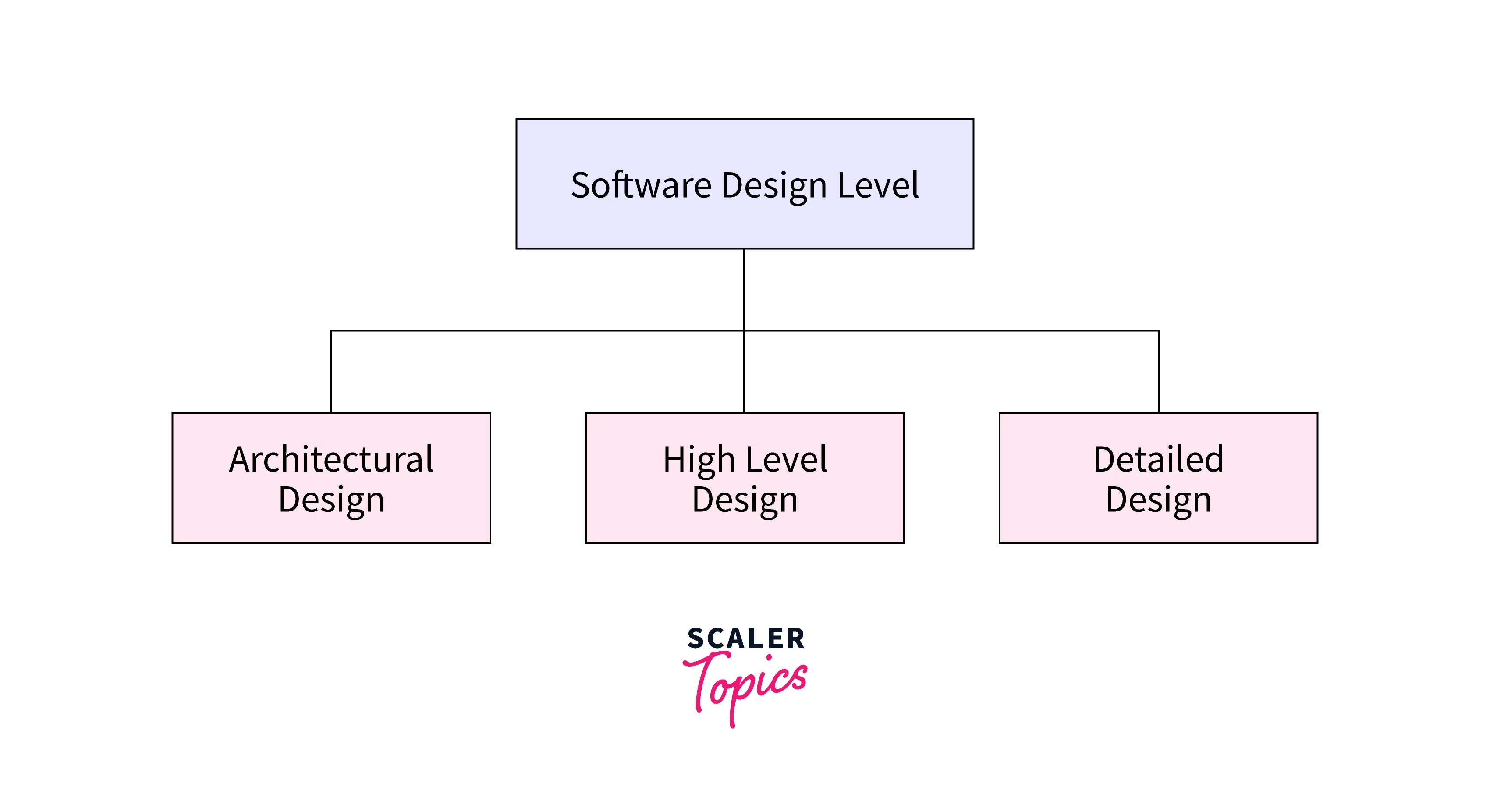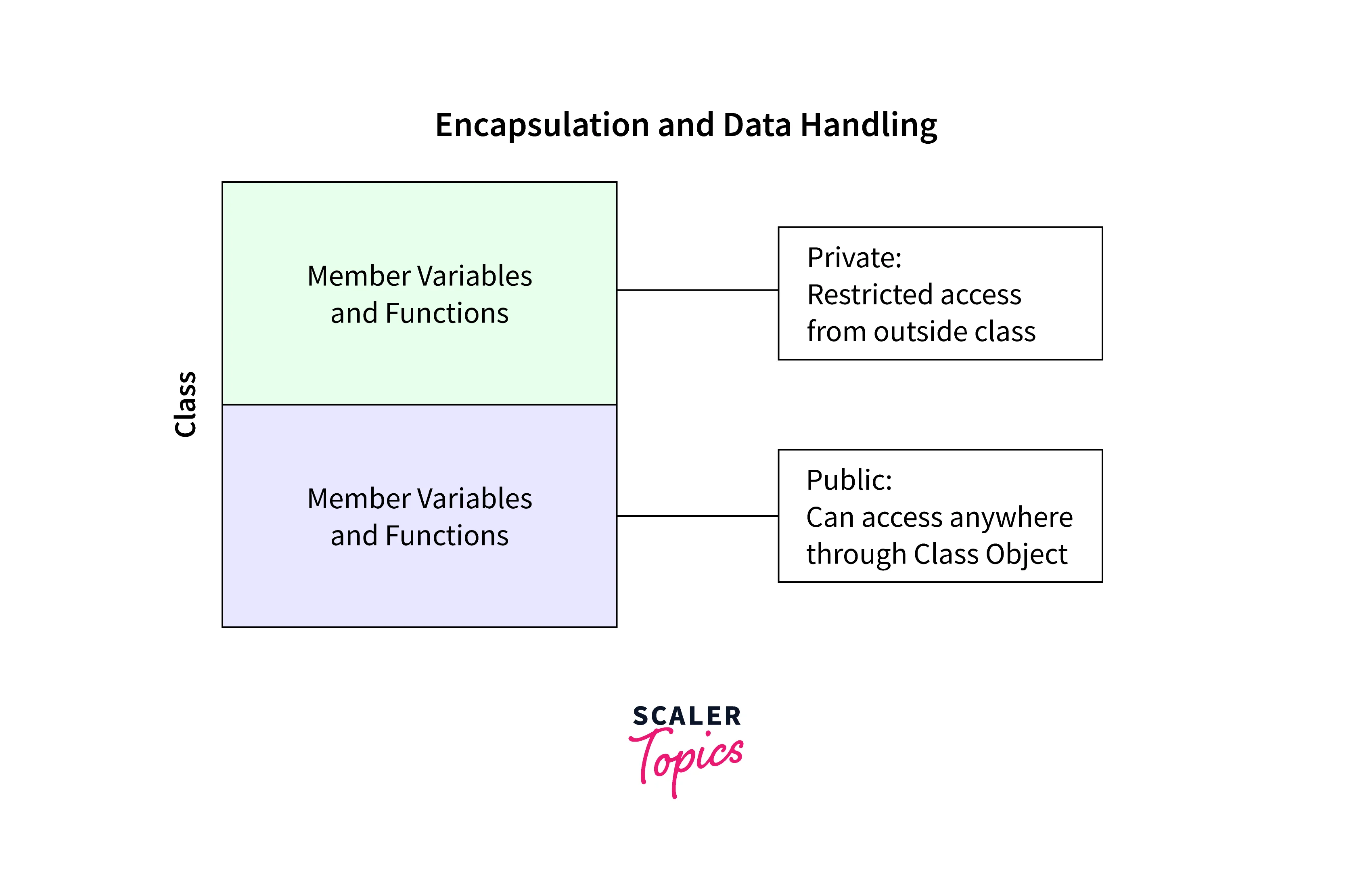Basics of Software Design
Overview
Let's start with an overview of what is software design in software engineering. The process of creating software methods, functions, objects, and the general structure and interaction of your code such that the resulting functionality meets the needs of your users is known as software design. There are numerous approaches to software design. Various developers prefer varying levels of design upfront or during the execution process. Generally, before beginning coding, the overall design should be thoroughly thought out and reviewed. It is easier to try out different designs early in the development cycle and find problems than to make a significant design change after most of the code has been written.
What is Software Design?
Software design is a method that converts user requirements into a suitable form for the programmer to employ in software coding and implementation. It is concerned with converting the client's requirements as defined in the SRS (Software Requirement Specification) document into a form that can be easily implemented using a programming language. A good software designer needs to have knowledge of what software engineering is.

The software design phase is the first step in the SDLC (Software Development Life Cycle) that shifts the focus from the problem domain to the solution domain. In software design, the system is viewed as a collection of components or modules with clearly defined behaviors and bounds.
Objectives of Software Design
The following objectives describe what is software design in software engineering.

- Correctness: A good design should be correct, which means that it should correctly implement all of the system's features.
- Efficiency: A good software design should consider resource, time, and cost optimization parameters.
- Understandability: A good design should be easy to grasp, which is why it should be modular, with all parts organized in layers.
- Completeness: The design should include all components, such as data structures, modules, and external interfaces, among others.
- Maintainability: A good software design should be flexible when the client issues a modification request.
Levels of Software Design

There are three levels of software design.
Architectural Design
A system's architecture can be defined as the system's overall structure and how that structure offers conceptual integrity to the system. The architectural design characterizes the software as a system with numerous interconnected components. The designers acquire an overview of the proposed solution domain at this level.
High-level Design
The high-level design deconstructs the architectural design's 'single entity-multiple component' notion into a less abstract perspective of subsystems and modules, depicting their interaction with one another. High-level design is concerned with how the system and its components can be implemented as modules. It recognizes the modular structure of each subsystem, as well as their relationship and interaction with one another.
Detailed Design
After the high-level design is completed, the detailed design begins. Each module is extensively investigated at this level of software design to establish the data structures and algorithms to be used. Finally, a module specification document is used to document the stage's outcome. It defines the logical structure of each module as well as its interfaces with other modules.
Software Design Concepts
Let us look at some software design concepts that assist a software engineer in creating the model of the system or software product to be developed or built. The following ideas should be grasped before designing a software system.
Abstraction
One of the fundamental concepts of object-oriented programming (OOP) languages is an abstraction. Its primary purpose is to deal with complexity by concealing internal details from the user. This allows the user to build more complicated logic on top of the offered abstraction without having to understand or even consider all the hidden complexity.
Modularity

Modularity refers to breaking a system or project into smaller sections to lessen the system's or project's complexity. Similarly, modularity in design refers to the division of a system into smaller elements that can be built independently and then used in multiple systems to execute different purposes. Sometimes to deal with Monolithic software, which is difficult to grasp for software engineers, it is required to partition the software into components known as modules. As a result, modularity in design has become a trend that is also essential.
Architecture
A system's software architecture represents the design decisions linked to the general structure and behavior of the system. Architecture assists stakeholders in comprehending and analyzing how the system will attain critical characteristics such as modifiability, availability, and security. It specifies how components of a software system are constructed, as well as their relationships and communication. It acts as a software application blueprint and a development foundation for the developer team.
Refinement
Refinement means removing any impurities and improving the quality of something. The software design refinement idea is a process of building or presenting the software or system in a detailed manner, which implies elaborating on a system or software. In addition, refinement is essential for identifying and correcting any possible errors.
Design Patterns
A Software Design Pattern is a general, reusable solution to a commonly occurring problem within a given context in software design. They are templates to solve common software engineering problems, representing some of the finest practices experienced object-oriented software engineers utilize. A design pattern systematically describes and explains a general design that handles a recurring design challenge in object-oriented systems. It discusses the problem, the remedy, when to use it, and the repercussions. It also provides implementation guidance and examples.
Information/Data Hiding

Simply put, information hiding implies concealing information so that an unauthorized entity cannot access it. In software design, information hiding is accomplished by creating modules in such a way that information acquired or contained in one module is concealed and cannot be accessible by other modules.
Refactoring
Refactoring is the process of reorganizing code without affecting its original functionality. Refactoring aims to improve internal code by making modest changes that do not affect the code's exterior behavior. Computer programmers and software developers refactor code to improve the software's design, structure, and implementation. As a result, Refactoring increases code readability while decreasing complications. Refactoring can also assist software engineers in locating faults or vulnerabilities in their code.
Conclusion
- Software design is the process that converts user requirements into a suitable form for the programmer to employ in software coding and implementation.
- It is concerned with converting the client's requirements as defined in the SRS (Software Requirement Specification) document into a form that can be easily implemented using a programming language.
- In the SDLC (Software Design Life Cycle), the focus shifts from the problem domain to the solution domain during the software design phase. It attempts to specify how to meet the requirements outlined in the SRS.
- The objectives of the software design process are correctness, completeness, efficiency, flexibility, consistency, and maintainability.
Elevate your design finesse with our Instagram System Design course, a transformative opportunity to become a design virtuoso.
